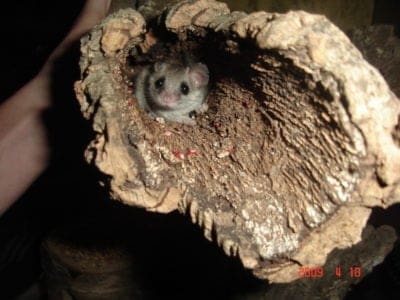Below you can find an extensive list of Ethiopian animals. We currently track 260 animals in Ethiopia and are adding more every day! This Nubian ibex (/Capra nubiana) is a desert dwelling animal like its cousin the Walia Ibex, which is found in Ethiopia. ©SunshineC/Shutterstock.com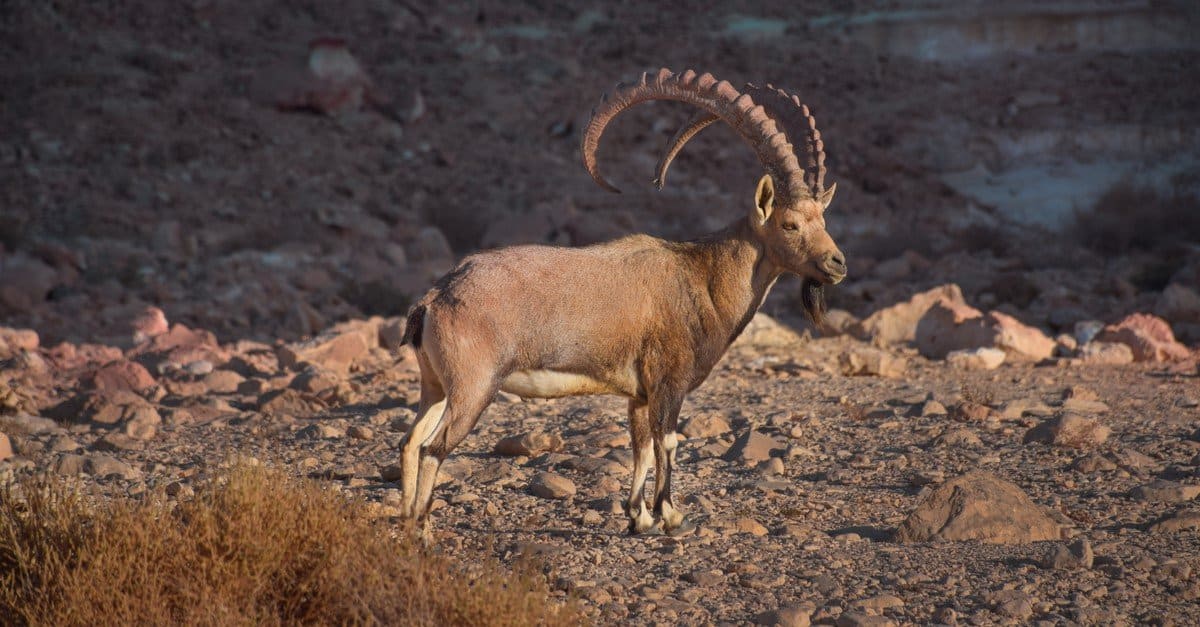
Ethiopia is home to some of the most unique wildlife in Africa, including 10 species that can only be found within its borders. While the famous baboon can be found in both Africa and Asia, the lesser-known Gelada is baboon-sized wild animals commonly found in the Semien Mountains of Ethiopia. These wild animals are considered to be some of the least dangerous wildlife in their order. The last surviving Walia Ibex goats (Capra walie) also call this mountain range home. The Ethiopian Wolf, or simien fox , is the rarest canid on earth and happens to be Africa’s most endangered carnivore.
The Bale Mountain Vervet is a small monkey that can be found in the bamboo forests of the Bale Mountains, indicated by its informal classification. The Mountain Nyala and Menelik’s Bushbuck are both antelopes that are closely related, perhaps explaining why they are also both endemic to the Bale Mountains of Ethiopia, where dense forests can be found along the southern slopes.
Swayne’s Hartebeest is an antelope that prefers grassland habitats during both the wet and dry seasons. While they used to be found in Somalia, they underwent local extinction, or extirpation, there. These animals are famous for being named after the British officer that discovered them. There are eight recognized subspecies of the hartebeest, and the Lelwel and Swayne’s hartebeests are endangered, while the Tora hartebeest is critically endangered.
With a bright green body and yellow head, the Yellow-Fronted Parrot is a spectacularly unique bird found only in Ethiopia. Named for its characteristic dark tresses, the Black-Maned Lion varies genetically when compared to all other African Lions.
Official National Animal
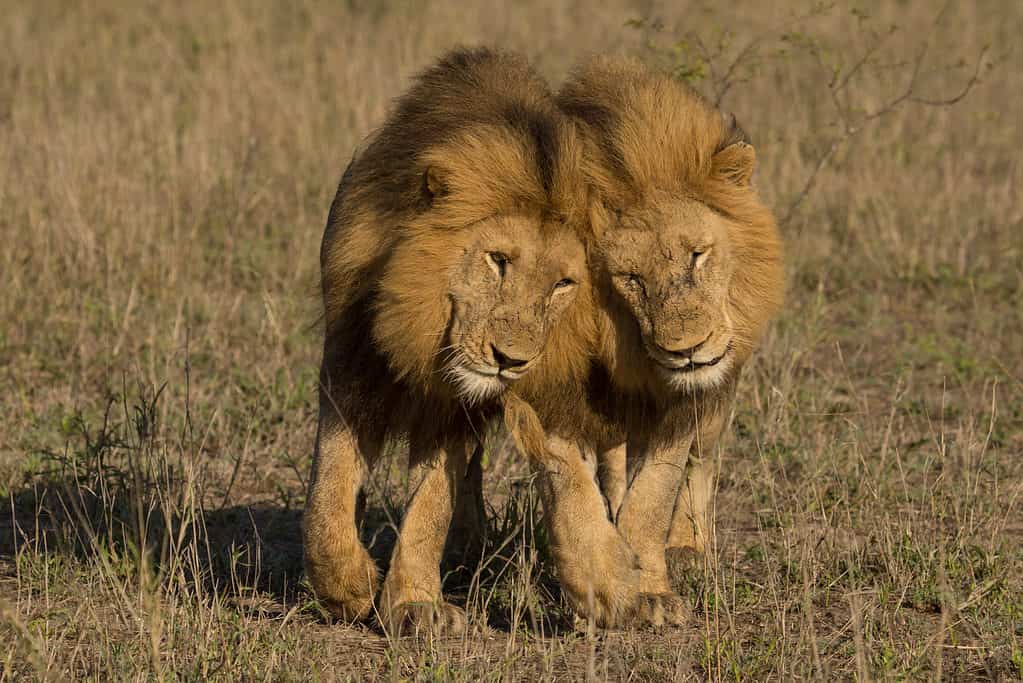
The lion is the national animal of Ethiopia, but it is endangered.
©Maryke Scheun/Shutterstock.com
The official national animal of Ethiopia is the lion. This national animal is highly endangered, however, and conservationists are fighting to stabilize their populations and secure their habitats.
These wild animals are found in grassland and savanna biomes, where lions can roam freely near watering holes, seasonal rivers, and prey. This diet consists of zebras, gazelles, buffaloes, and antelopes that roam nearby.
There are estimated to be a remaining 1700 or fewer lions in Ethiopia today, a far cry from the once burgeoning lion population of the past.
Where to Find The Top Wild Animals In Ethiopia
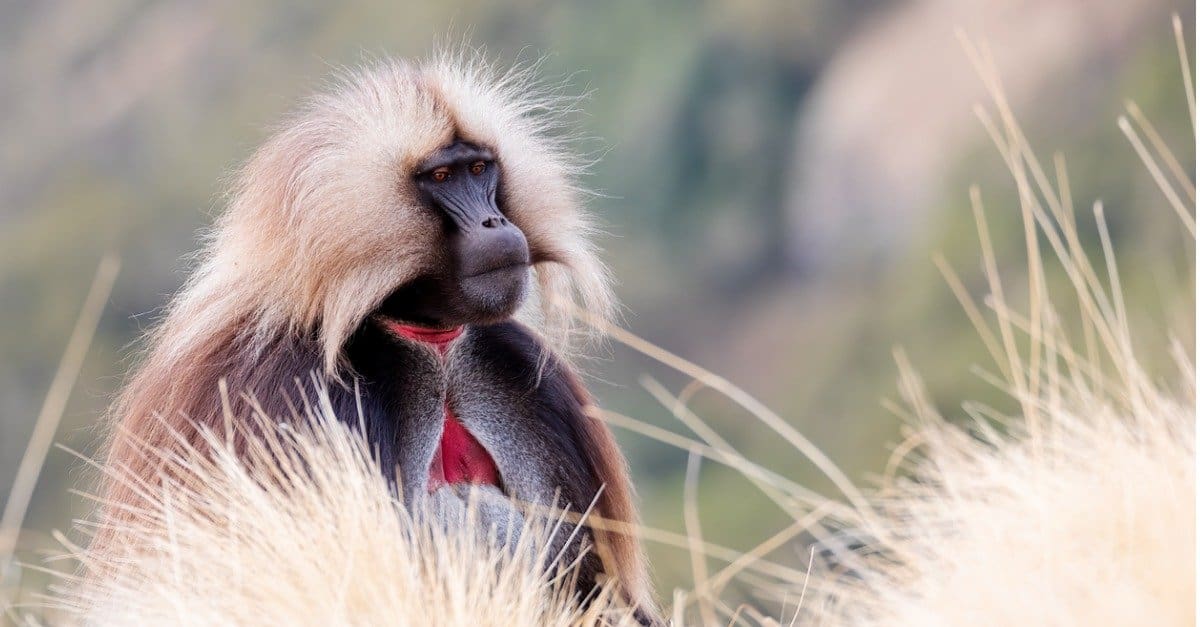
Gelada monkeys have a distinctive appearance but also similarities to the baboon.
©Artush/Shutterstock.com
Ethiopian Wolf – If you are lucky enough to visit the Sanetti Plateau in Bale Mountains National Park, you’ll spot the world’s rarest wolf. At fewer than 500 left in the wild, almost all of them live on this specific plateau.
Black-Maned Lion – Another tenant of the Bale Mountains National Park, these ferociously enthralling animals have been spotted frequently in the Harenna Forest sector of the park.
Gelada – Curious to see how these primates compare to baboons up close? You’ll only find them in the Simien Mountains, so be sure to prepare for a bit of a hike to see these incredible creatures.
Flamingos – While not exclusively Ethiopian like most of the animals discussed here, flamingos are a popular family of birds that can be found wading on the shores of Lake Chitu and Lake Shalla located in the Rift Valley.
There are also zoos in Ethiopia such as the Addis Ababa Zoo and the Unity Park Zoo in the capital city. In addition, Ethiopia has two lion parks, and various national parks and animal sanctuaries.
Most Dangerous
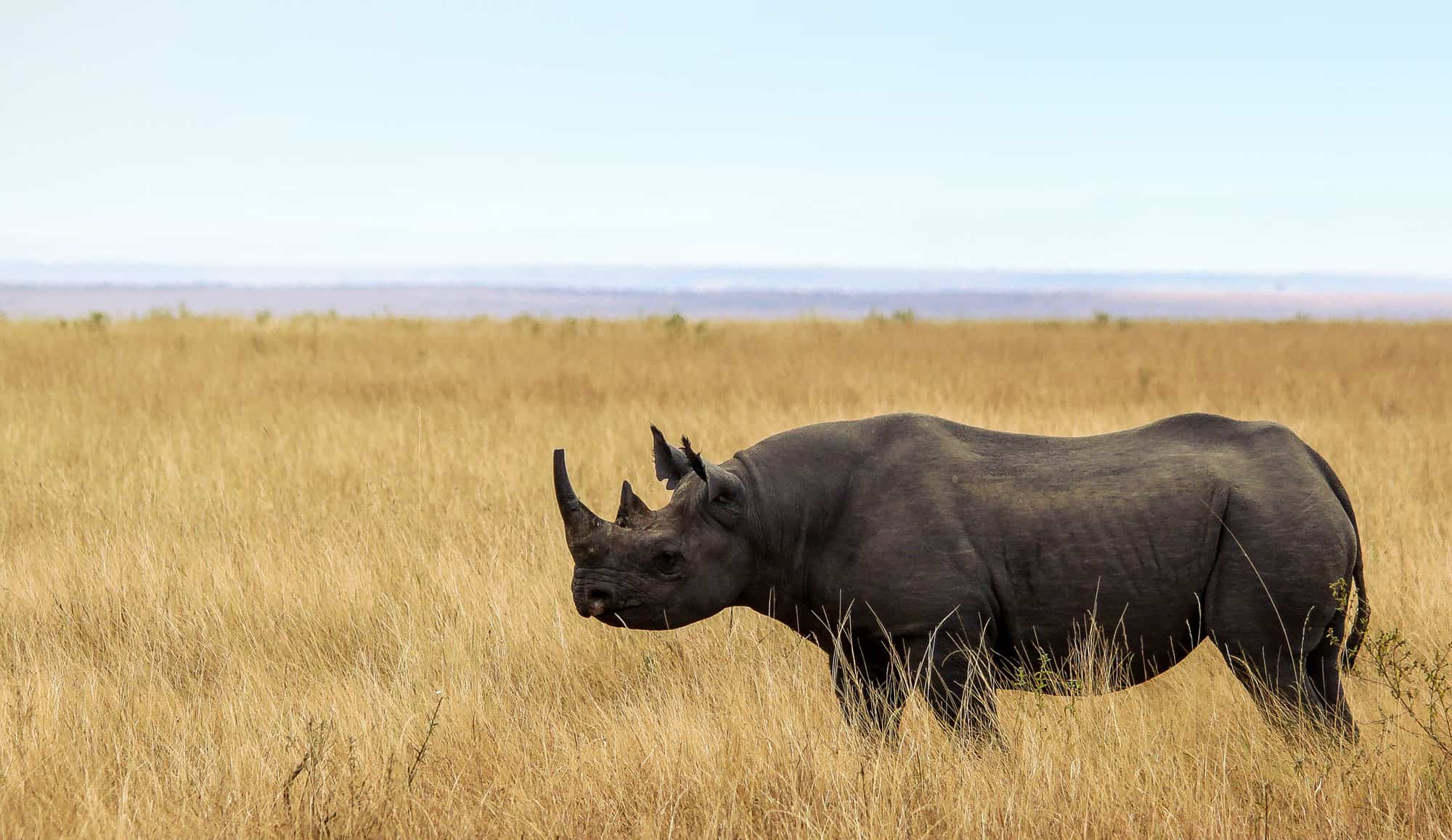
The endangered black rhino is aggressive and dangerous.
©iStock.com/Black Rhinoceros, Rhinoceros, Savannah, Tanzania, Animal
Lions might be the national animal of Ethiopia, but they are also famous for being one of the most dangerous, reportedly killing around 250 people per year across the continent. It should be noted that this is still a relatively uncommon occurrence, and it is believed that only sick or elderly lions turn to humans when they are unable to hunt their natural prey.
White and Black Rhinos are another contender for Ethiopia’s most dangerous animal. The Black Rhino is traditionally considered the more aggressive of the two, though both charge when threatened.
Endangered
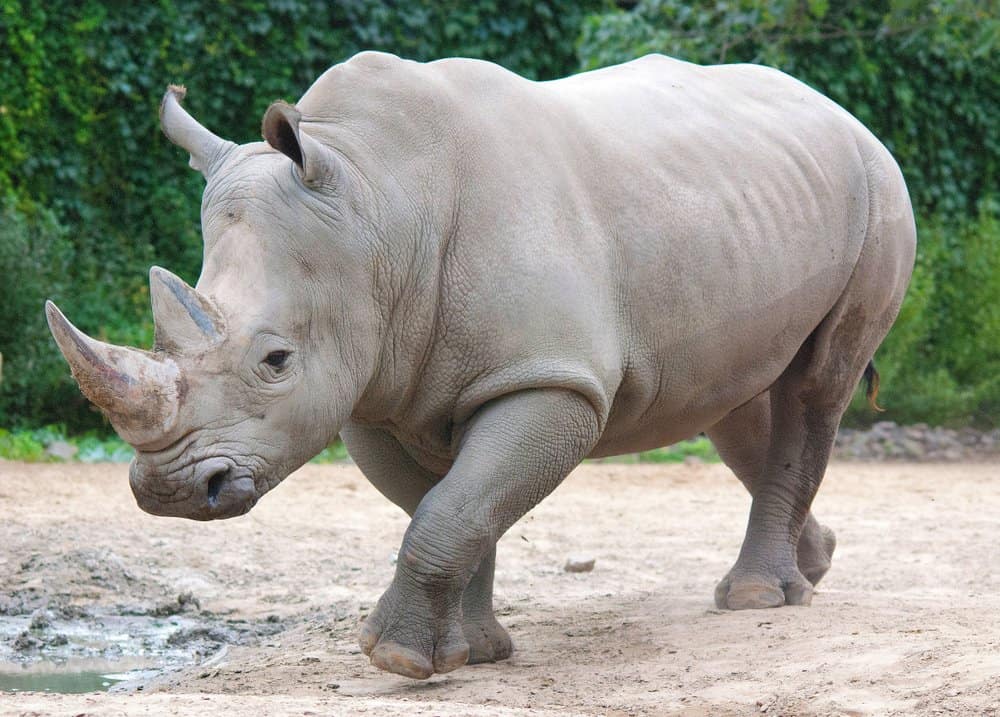
©meunierd/Shutterstock.com
Before 1895, southern white rhinos were thought to be extinct. Then a group of about 100 was discovered in South Africa. From that group, conservationists carefully grew the population until there are now about 16,000 white rhinos in the world. What a success story!
The Ethiopian Wolf is not only the most endangered carnivore in Africa, with fewer than 440 individuals remaining, but also it is endemic to the country’s highlands, restricted to just seven isolated enclaves in the region. As Africa’s only wolf species and one of the largest wolf species, the impending threat of extinction is grave.
Many of the most dangerous animals happen to be the most endangered, as well. The Black Rhino and Lion commonly fall victim to severe cases of poaching. There are many other endangered species in the country, which can be found here.
Rarest
The Somali Wild Ass is a subspecies of the African Wild Ass, which is a relative of the donkey. There are likely only about 700 in the wild and about 200 in captivity in zoos around the world. The IUCN Red List of endangered species described it as “critically endangered.” They live in Somalia, Somaliland, Entrea, and Ehtiopia.
Largest
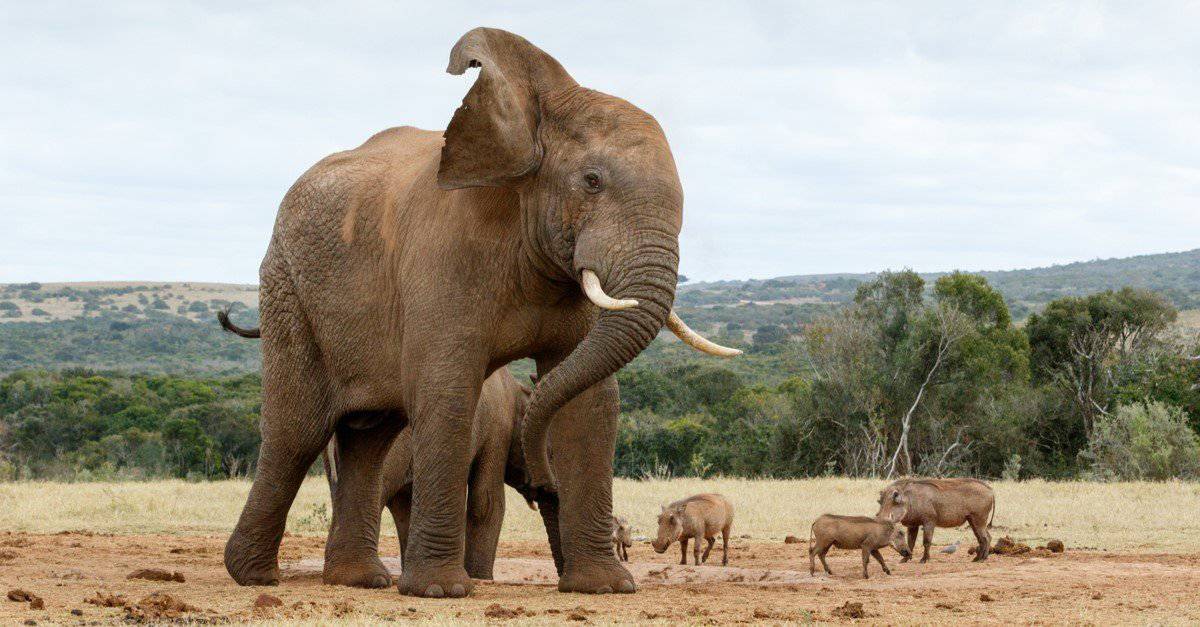
The African
elephant
is the largest living land animal. Sadly, about 90% of them have been wiped out in the last century due to poaching.
©Bildagentur Zoonar GmbH/Shutterstock.com
The African Bush Elephant is the largest living animal on land. The white rhino is the second largest. The elephant has a similar lifespan to humans at around 70 years. Poaching continues to be the largest threat to these animals, as the ivory trade ignores the laws and other international efforts toward regulation. Habitat loss is another major threat to this species. Although humans have been known to be trampled by male elephants who become particularly aggressive in musth, a normal periodic rise in reproductive hormones, these occurrences are exponentially less than those of humans killing elephants.
Ethiopian Animals

Aardvark
Can move 2ft of soil in just 15 seconds!
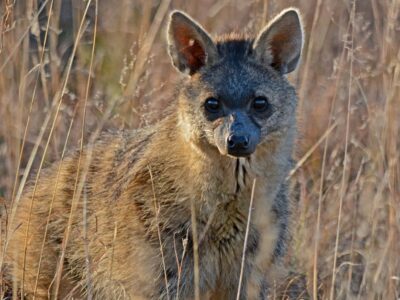
Aardwolf
The aardwolf has five toes on its front paws

Abyssinian
One of the oldest cat breeds in the world!
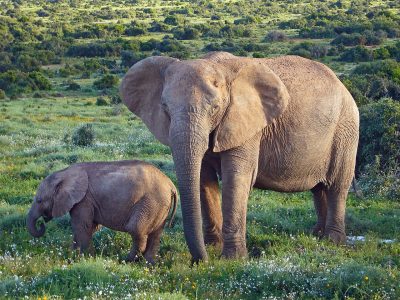
African Bush Elephant
Can drink up to 50 gallons a day

African Civet
Secretes up to 4g of musk every week!

African Clawed Frog
African clawed frogs were used as pregnancy testers from the 1930s to the early 1960s.

African Fish Eagle
African fish eagles belong to the genus of sea eagles
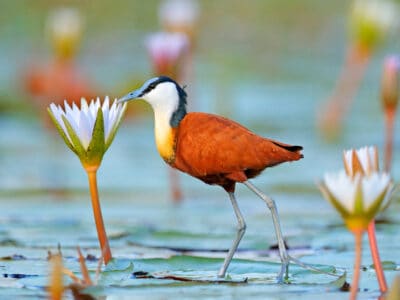
African Jacana
The males raise the young
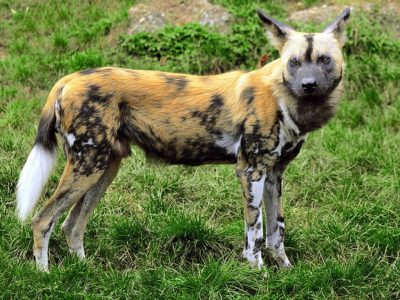
African Wild Dog
Also known as the painted dog!

Agama Lizard
The agama forms small social groups that contain both dominant and subordinate males.
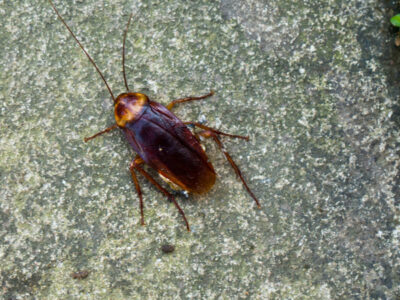
American Cockroach
Despite its name, actually originated from Africa and the Middle East

Ant
First evolved 100 million years ago!
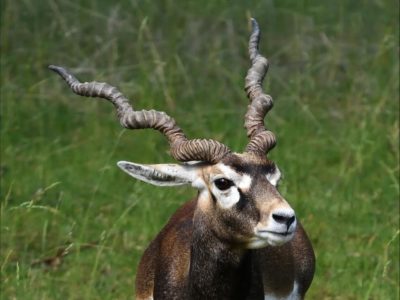
Antelope
Renew their horns every year!

Armyworm
They are so named because they "march" in armies of worms from one crop to another in search of food
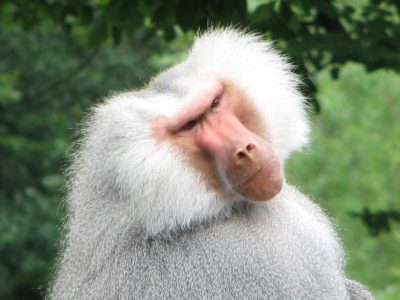
Baboon
Can travel more than four miles a day!
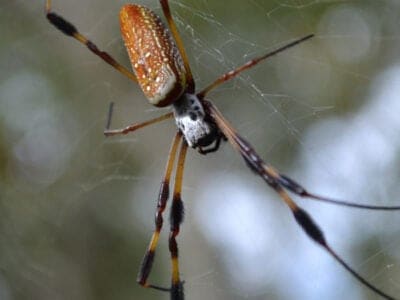
Banana Spider
People spin clothing and fishing nets out of these spiders’ silk.
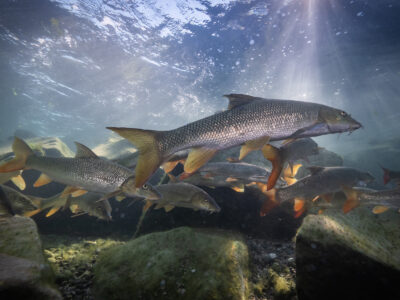
Barb
There are over 1768 known species!

Barn Owl
Found everywhere around the world!

Barn Swallow
Older offspring help care for new hatchlings.

Bat
Detects prey using echolocation!
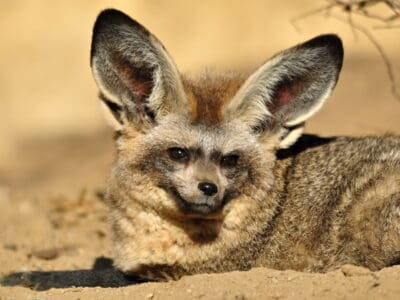
Bat-Eared Fox
Bat-eared foxes can run up to 35 MPH!

Bed Bugs
Bed bugs feed for 4-12 minutes.

Bee
Rock paintings of bees date back 15,000 years

Beetle
There are more than 350,000 different species

Beewolf wasp
They hunt bees

Bichir
The bichir species is more than 400 million years old

Bird
Not all birds are able to fly!

Biscuit Beetle
The biscuit beetle form a symbiotic relationship with yeast
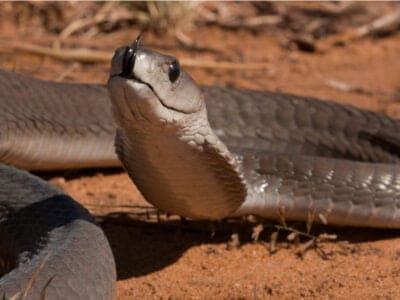
Black Mamba
Black mambas are the longest venomous snake in Africa, and second longest in the world.

Black Widow Spider
They typically prey on insects!
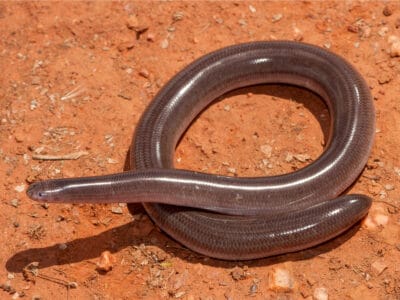
Blind Snake
The blind snake is often mistaken for a worm.
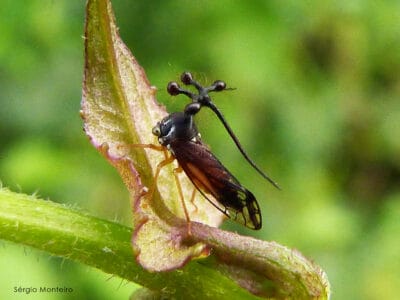
Brazilian Treehopper
“Mild-Mannered Minimonsters”
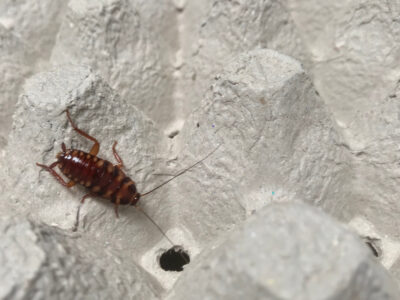
Brown-banded Cockroach
Females glue egg cases to furniture

Brown Dog Tick
Can live its entire life indoors

Buffalo
"They look like you owe them money."

Bumblebee
The most common species of bee!

Bush Baby
In a series of leaps, this creature can cover almost 30 feet of distance in just a few seconds.

Butterfly
There are thought to be up 17,500 species!
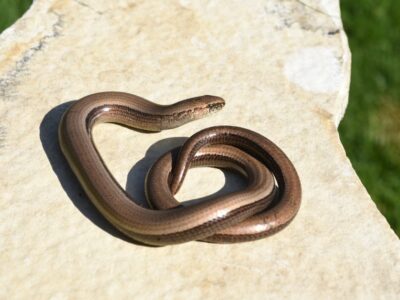
Caecilian
Some species' babies use their hooked or scraper-like teeth to peel off and eat their mother's skin
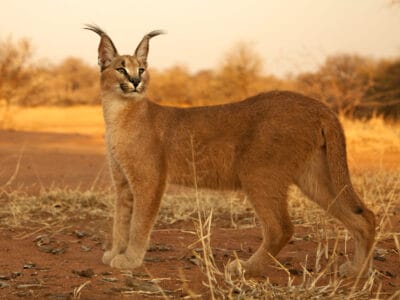
Caracal
Has 20 different muscles in it's ears!

Carpenter Ant
Carpenter ants can lift up to seven times their own weight with their teeth!

Carpet Viper
The Carpet Viper probably bites and kills more people than any other species of snake.

Cat
May have been domesticated up to 10,000 years ago.

Caterpillar
The larvae of a moth or butterfly!

Catfish
There are nearly 3,000 different species!

Centipede
There are about 3,000 documented species!
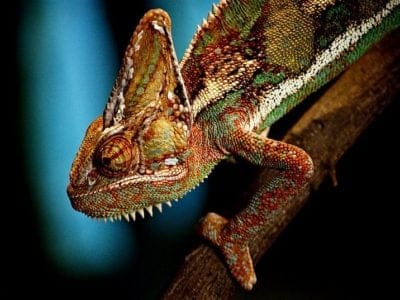
Chameleon
There are more than 160 different species!
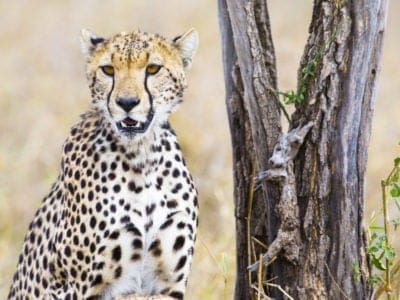
Cheetah
The fastest land mammal in the world!

Chicken
First domesticated more than 10,000 years ago!

Cichlid
There are more than 2 000 known species!

Cockroach
Dated to be around 300 million years old!

Codling Moth
Pupae are able to undergo diapause to survive poor fruit yield years and winter.
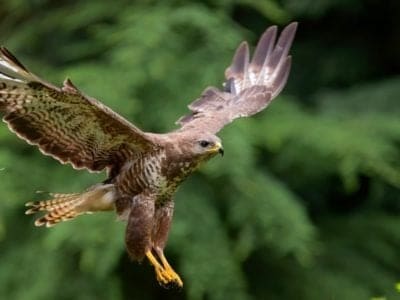
Common Buzzard
The most common raptor in the UK!

Common Furniture Beetle
The common furniture beetle feeds exclusively on wood

Common House Spider
House spiders have the ability to eat most insects in a home.

Cormorant
They can fly 35 mph and dive 150 feet below water.

Cow
There are nearly 1.5 billion worldwide!

Crab
There are 93 different crab groups

Crab Spider
Crab Spiders can mimic ants or bird droppings
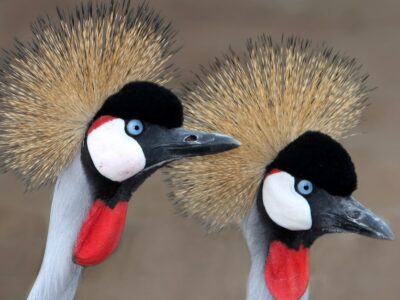
Crane
Many are critically endangered species!

Cricket
Male crickets can produce sounds by rubbing their wings together
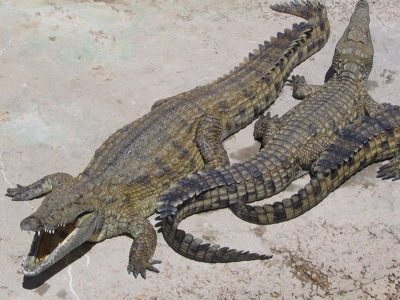
Crocodile
Have changed little in 200 million years!

Crocodylomorph
Crocodylomorphs include extinct ancient species as well as 26 living species today.

Crow
A group of these birds is called a Murder.
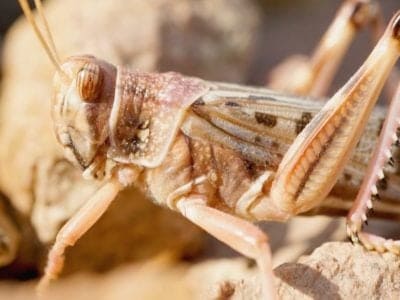
Desert Locust
Solitary locusts are grey while gregarious locusts are yellow with stripes.

Dik-Dik
Dik-diks use a tar-like liquid from their eye glands to mark their territory!
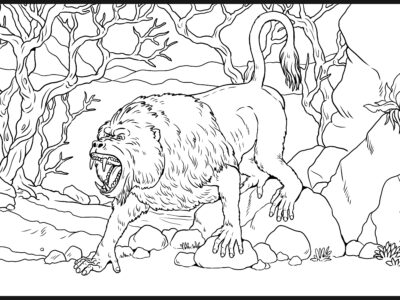
Dinopithecus
The only species currently recognized of this ancient baboon is Dinopithecus ingens.

Dog
First domesticated in South-East Asia!

Dog Tick
Dog ticks feed on dogs and other mammals

Donkey
First domesticated 5,000 years ago!

Dragonfly
It's larvae are carnivorous!

Duck
Rows of tiny plates line their teeth!

Dung Beetle
The dung beetle can push objects many times its own weight

Earthworm
They are hermaphrodites, which means they have male and female organs

Earwig
There are nearly 2,000 different species!

Eel
Eels can be a mere few inches long to 13 feet!
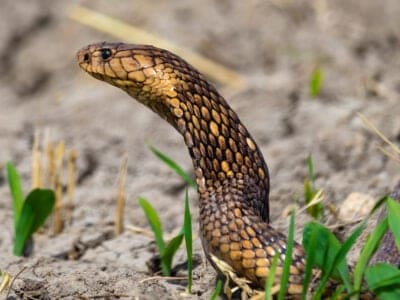
Egyptian Cobra (Egyptian Asp)
The Egyptian cobra is one of the largest cobras in Africa.
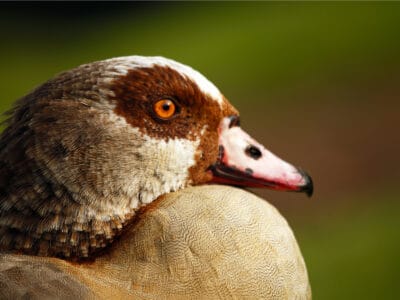
Egyptian Goose
A duck species that resembles a goose when flying
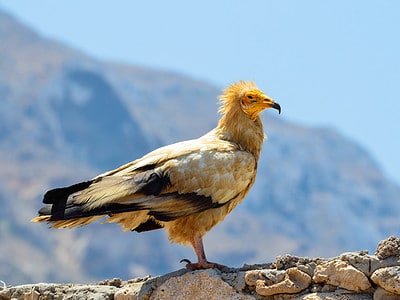
Egyptian Vulture
They steal large ostrich eggs and use rocks and pebbles to crack the shells.
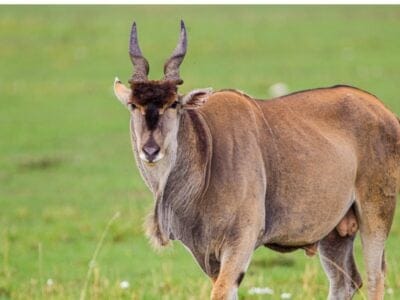
Eland
Both females and males have horns.
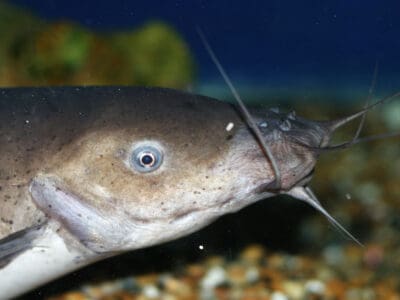
Electric Catfish
The electric catfish can discharge an electric shock up to 450 volts
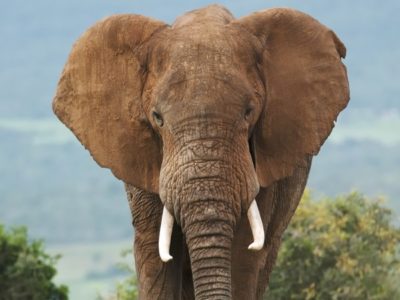
Elephant
Spends around 22 hours a day eating!
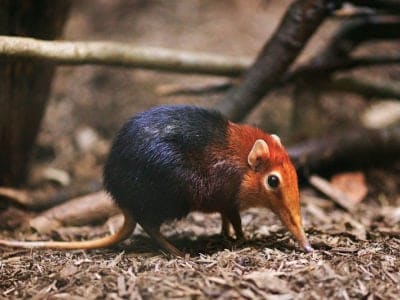
Elephant Shrew
Found exclusively on the African continent!

Falcon
The fastest creatures on the planet!

False Widow Spider
False spiders actually prey on black widow spiders and other hazardous spiders

Fire Ball Python
The fire ball python morph is known for its rich golden and reddish-brown coloration.

Firefly
The firefly produces some of the most efficient light in the world

Flamingo
Sleeps on just one leg!

Flea
Adult fleas can jump up to 7 inches in the air

Fly
There are more than 240,000 different species!
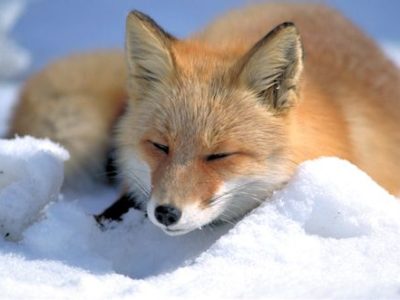
Fox
Only 12 species are considered "true foxes"

Frog
There are around 7,000 different species!
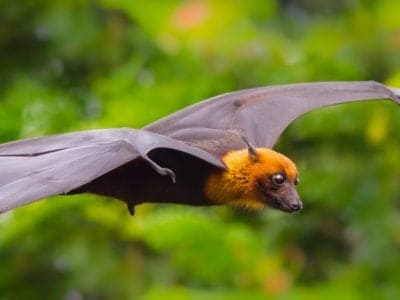
Fruit Bat
Among the largest bats in the world

Fruit Fly
Fruit flies are among the most common research animals in the world
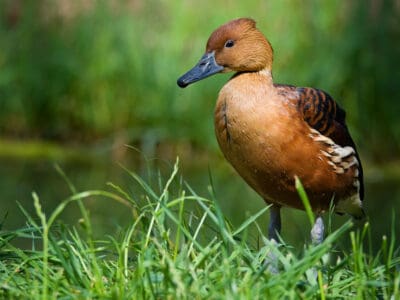
Fulvous Whistling Duck
They build a ramp from their nest, which leads to a nearby water source
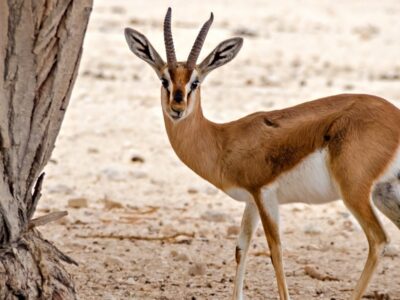
Gazelle
Named for the Arabic word for love poems
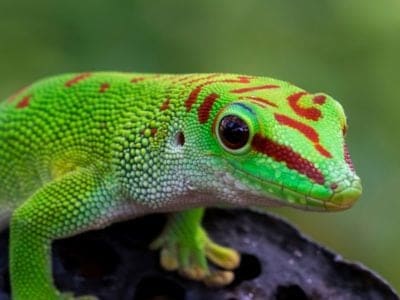
Gecko
There are thought to be over 2,000 species!

Gerbil
Originally known as the Desert Rat!

German Cockroach
The most common type of urban roach
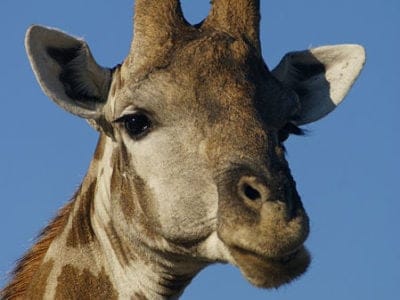
Giraffe
Long, black tongue can grow to 18 inches long!
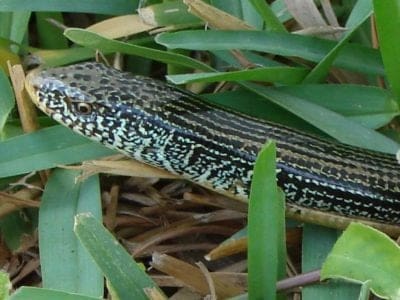
Glass Lizard
Can grow up to 4ft long!

Glowworm
Found inhabiting dense woodland and caves!

Gnat
Males form large mating swarms at dusk

Goat
Most closely related to the Sheep!
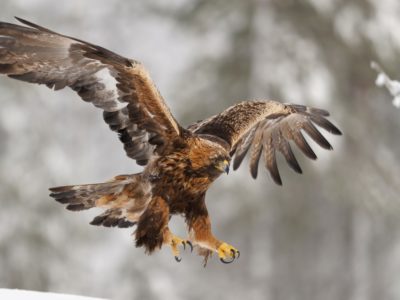
Golden Eagle
Their calls sound like high-pitched screams, but they are quiet most of the time.
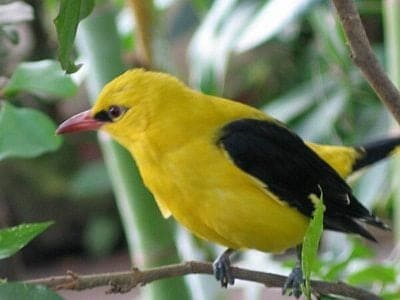
Golden Oriole
Migrates between Europe and Asia!

Grasshopper
There are 11,000 known species!
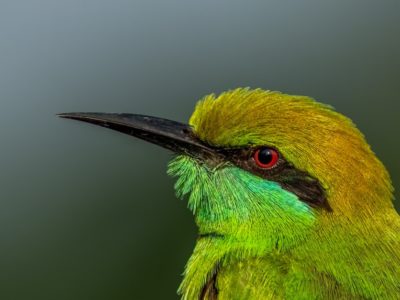
Green Bee-Eater
Mainly eats honeybees!
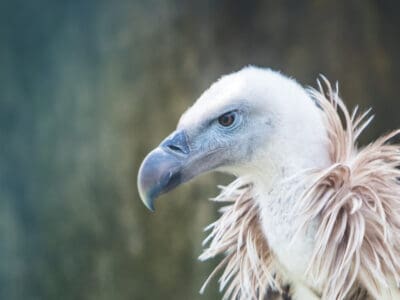
Griffon Vulture
Can spot a dead animal from thousands of feet away
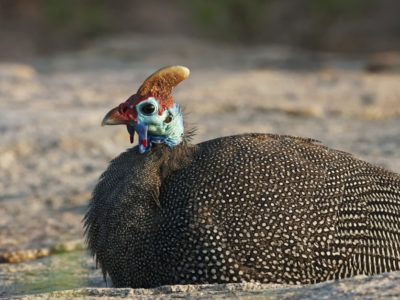
Guinea Fowl
Found in a vairety of African habitats!
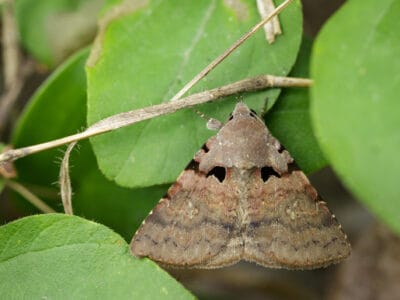
Gypsy Moth
One of the most invasive species in the world

Hamster
Able to run as quickly backwards as forwards!

Hare
Can reach speeds of over 50 mph!

Hawk Moth Caterpillar
Many hawk moth caterpillars eat toxins from plants, but don’t sequester them the way milkweed butterflies do. Most toxins are excreted.
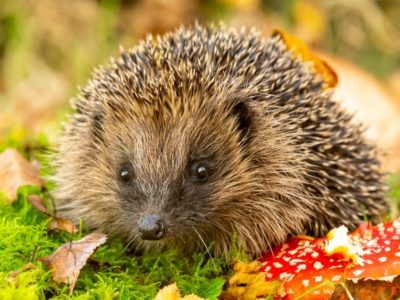
Hedgehog
Thought to be one of the oldest mammals on Earth!

Heron
Inhabits wetlands around the world!
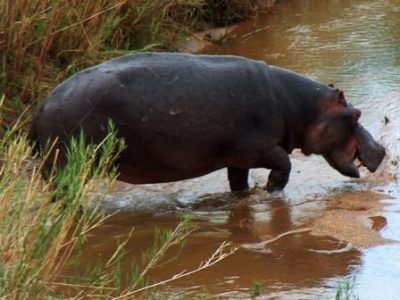
Hippopotamus
Has pink anti-bacterial sweat!

Honey Badger
One of earth's bravest creatures!

Honey Bee
There are only 8 recognized species!
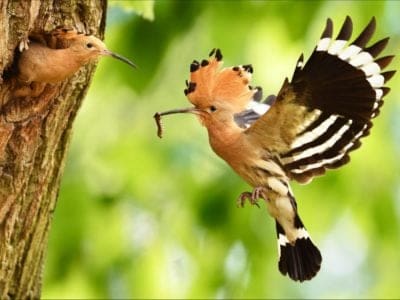
Hoopoe
Stunning bird with a stinky way to deter predators!

Horse
Has evolved over 50 million years!

Horsefly
Horseflies have been seen performing Immelmann turns, much like fighter jets.

Housefly
The fly has no teeth

Human
Thought to have orignated 200,000 years ago!

Huntsman Spider
Some huntsman spiders have an interesting way of moving around. Some cartwheel while others do handsprings or backflips.
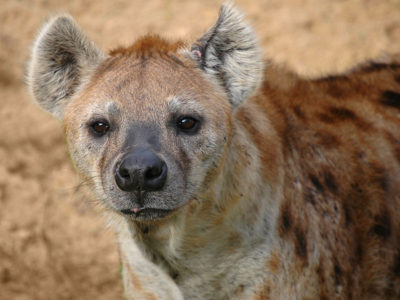
Hyena
There are four different species!
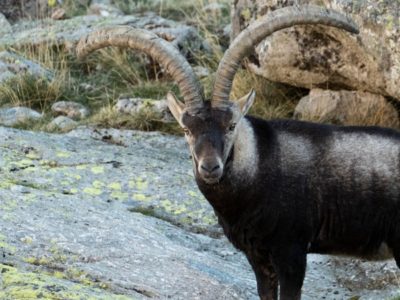
Ibex
Can jump over 6 feet straight up from a standstill

Ibis
Found in swamps, marshes and wetlands!

Insects
There are an estimated 30 million species!

Jacana
The jacana has the ability to swim underwater
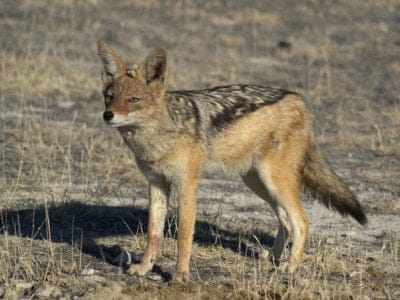
Jackal
Can maintain speeds of 16 km/h!

Jumping Spider
Some can jump 50 times the length of their bodies

Kenyan Sand Boa
A popular pet snake that comes in dozens of morphs!

Kingfisher
Inhabits wetlands and woodlands worldwide!
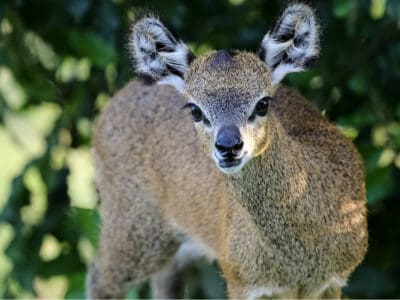
Klipspringer
Klipspringers can jump as high as 10-12ft!
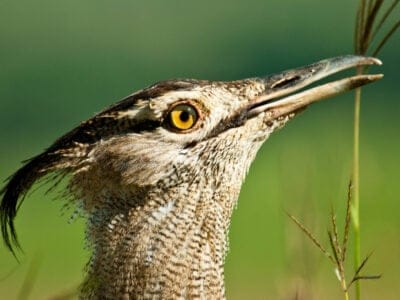
Kori Bustard
It's easily identified by its crest, large size, and wingspan
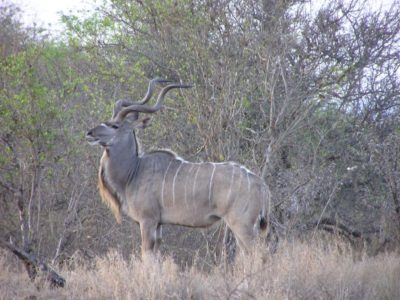
Kudu
Lives in herds of up to 24 individuals!

Ladybug
There are more than 5,000 species worldwide!
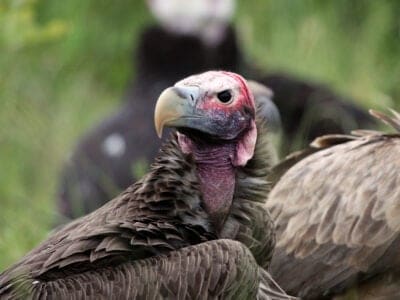
Lappet-faced Vulture
Lappet-faced vultures are tidy and wash their heads in a body of water after they’ve eaten

Leech
Has 10 pairs of eyes!
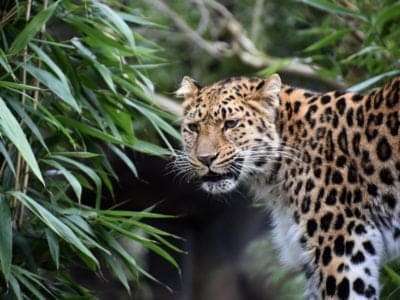
Leopard
Spends much of the time high in the trees!
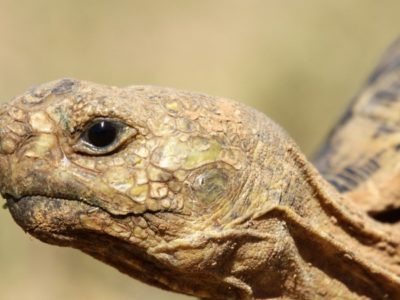
Leopard Tortoise
The most widely distributed tortoise in Africa!

Lesser Jacana
The lesser jacana is nomadic, often moving in search of temporary wetland habitats.

Liger
The offspring of a lion and tiger parents!

Lion
Lives in small groups called prides!

Lizard
There are around 5,000 different species!

Locust
Each locust can eat its weight in plants each day.

Maggot
Will only live in wet areas
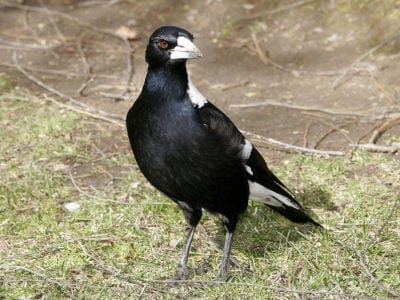
Magpie
They are found across Europe, Asia and Africa!
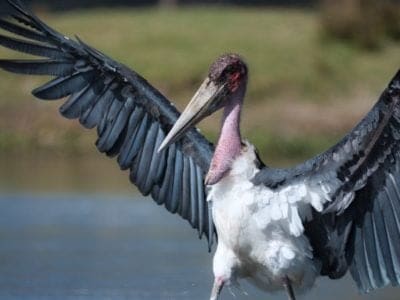
Marabou Stork
The marabou stork does not have a voice box.

Mayfly
There are 2,500 known species worldwide!

Mealybug
They have a symbiotic relationship with ants.

Millipede
Some species have a poisonous bite!

Mole
Primarily hunts and feeds on Earthworms!
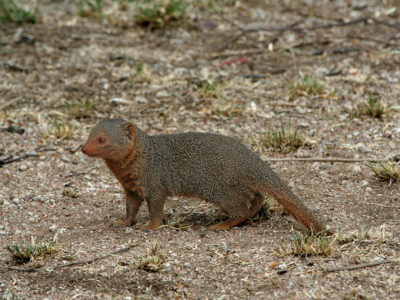
Mongoose
Range in size from just 1 to 3 foot!

Mongrel
Has characteristics of two or more breeds!
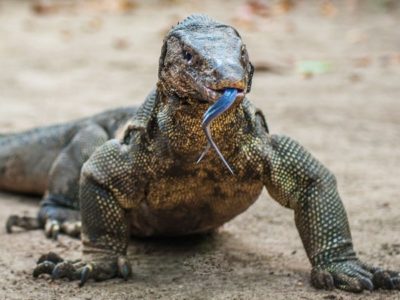
Monitor Lizard
Some species are thought to carry a weak venom!

Monkey
There are around 260 known species!

Moorhen
Feeds on aquatic insects and water-spiders!

Mosquito
Only the female mosquito actually sucks blood

Moth
There are 250,000 different species!

Mouse
Found on every continent on Earth!

Mule
The offspring of a horse and donkey parents!

Naked Mole Rat
Naked mole rats don’t get cancer

Nematode
Nematodes range in size from 1/10 of an inch to 28 feet long

Nightingale
Named more than 1,000 years ago!
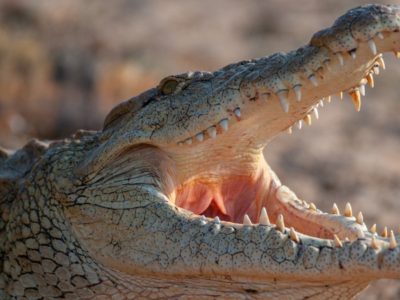
Nile Crocodile
Unlike other reptiles, the male Nile crocodile will stay with a female to guard their nest of eggs.
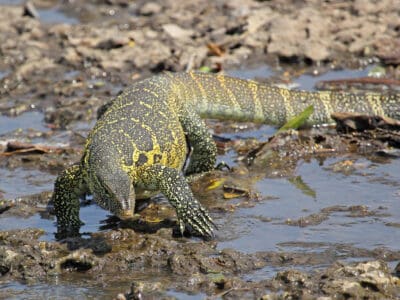
Nile Monitor
The Nile monitor is the world's fourth-largest lizard!

Nile Perch
Nile perch will sometimes eat those within its own species

No See Ums
There are more than 5,000 species.
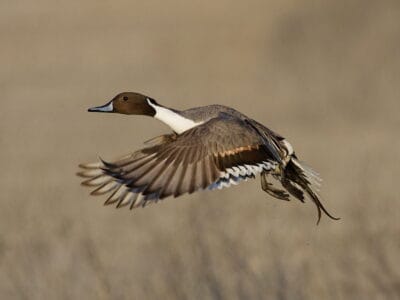
Northern Pintail
Northern pintails migrate at night with speeds reaching 48 miles per hour!
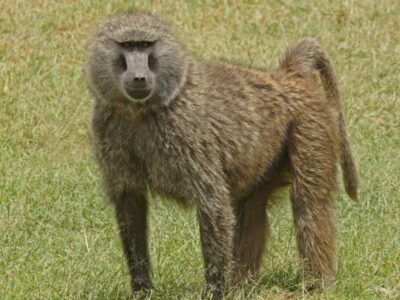
Olive Baboon
Olive baboons will sometimes form strong friendships with each other

Orb Weaver
Females are about four times the size of males
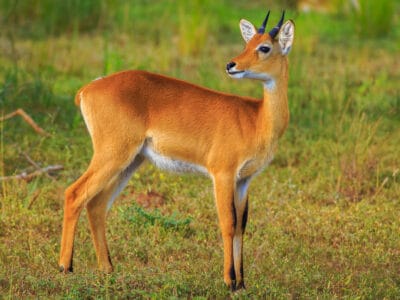
Oribi
Males oribis spend most of their time patrolling the borders of their territories; they can do this about 16 times an hour! However, 27% of their day is spent grazing.
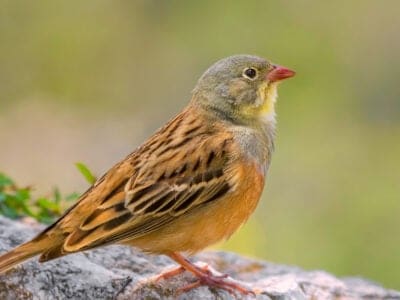
Ortolan Bunting
The tradition of hiding your face with a napkin or towel while eating this bird was begun by a priest who was a friend of the great French gastronome Jean Anthelme Brillat-Savarin.

Osprey
They reuse nesting sites for 70 years!
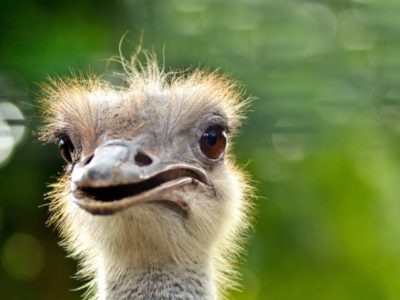
Ostrich
The largest bird in the world!

Otter
There are 13 different species worldwide

Owl
The owl can rotate its head some 270 degrees
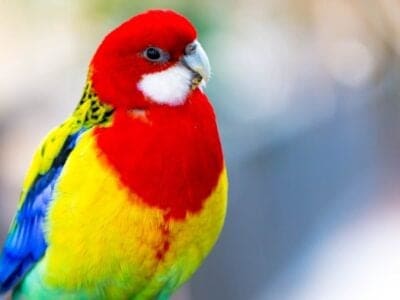
Parakeet
Monk parakeets are the only parakeets that actually build nests. They’re also the only parakeets to nest in great colonies.
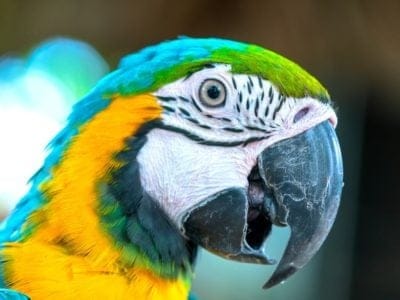
Parrot
Can live for up to 100 years!
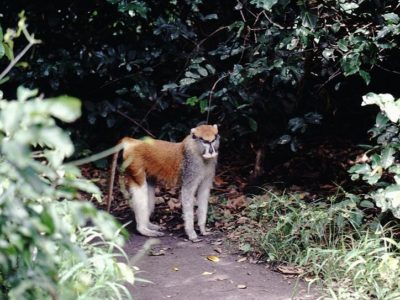
Patas Monkey
The fastest species of primate in the world!

Peregrine Falcon
Fastest animal on Earth

Pheasant
Females lay between 8 and 12 eggs per clutch!

Pigeon
They can find their way back to their nests from up to 1300 miles away.
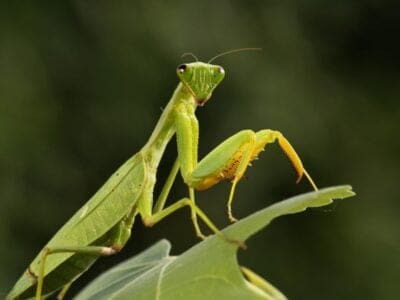
Praying Mantis
The mantis can turn its head 180 degrees.
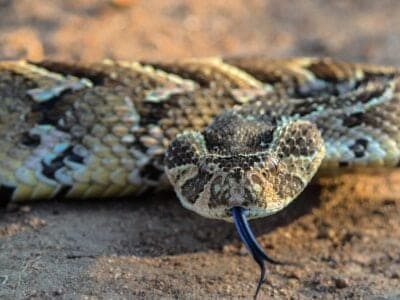
Puff Adder
This large snake is so-named because it will puff up its body to appear bigger than it is when directly threatened by a predator or person.

Quail
Inhabits woodland and forest areas worldwide!

Rabbit
There are more than 300 different species!

Rat
Omnivores that eat anything!
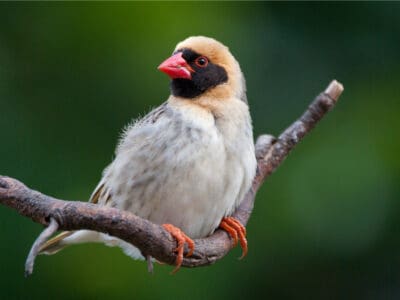
Red-Billed Quelea Bird
Is the most populous bird in the world

Red Spitting Cobra
Scientists believe that the red spitting cobra evolved from injecting venom to spitting it in response to the constant threat of early humans
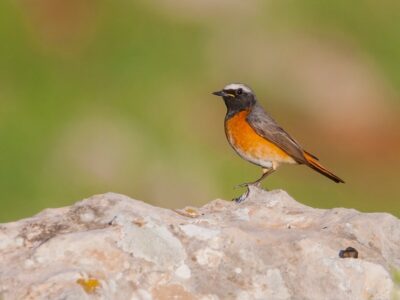
Redstart
They build their nests off the ground in tree holes, cavities, stone walls, and roofs
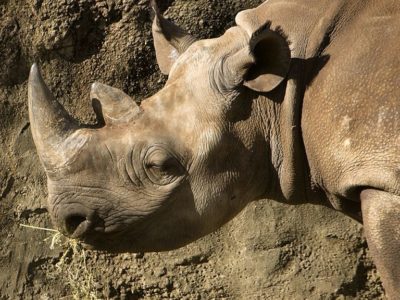
Rhinoceros
It's horns are made from keratin!

River Turtle
Inhabits freshwater habitats around the world!
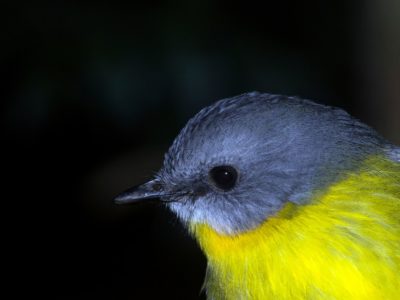
Robin
There are more than 45 species in Australia alone!
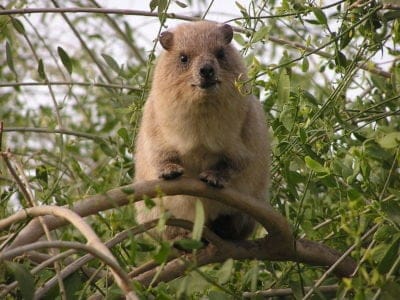
Rock Hyrax
Actually related to Elephants and Manatees!
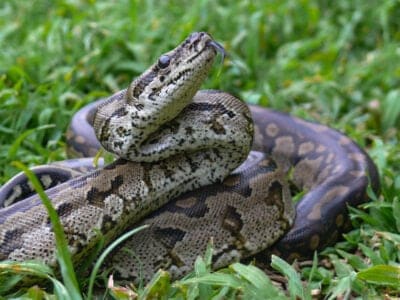
Rock Python
Rock pythons may have crossbred with the escaped Burmese pythons in Florida.

Rodents
The capybara, the world’s largest rodent, likes to be in and around bodies of water. Because of this, the Catholic Church in South America decided that it was a fish, and people were allowed to eat it during Lent and First Fridays.

Rooster
Will mate with the entire flock!

Sable Ferret
Ferrets were used during the Revolutionary War to keep down the rat population.
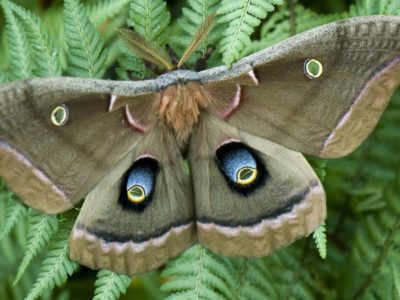
Saturniidae Moth
Some of the largest moths in the world
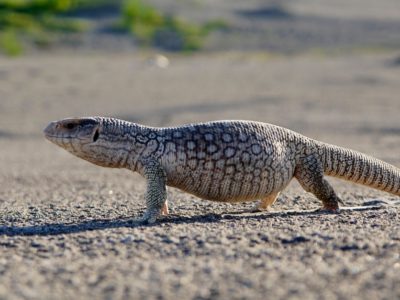
Savannah Monitor
Savannah monitors are one of the most popular lizards in captivity.

Scorpion
There are around 2,000 known species!

Sea Eagle
The sea eagle tends to mate for life with a single partner

Seahorse
Males give birth to up to 1,000 offspring!
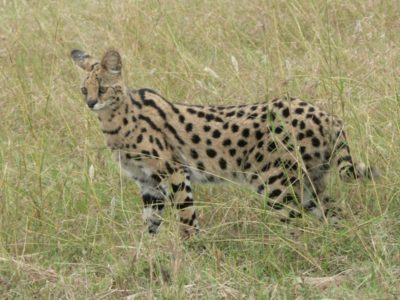
Serval
Can leap more than 1 meter into the air!

Sheep
Around 35 million in the English countryside!
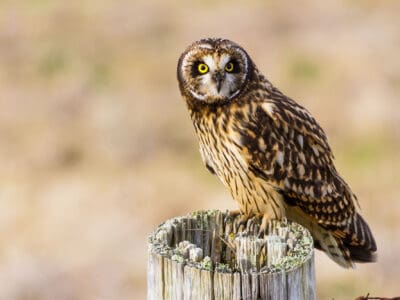
Short-Eared Owl
The short-eared owl is one of the most widespread owl species in the world, covering five continents.

Shrew
The spinal column of the shrew Scutisorex somereni is so strong and reinforced that it can support the weight of an adult human.

Shrimp
There are 2,000 different species worldwide!
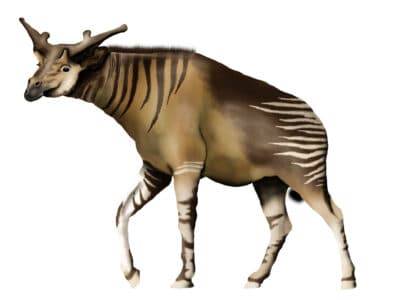
Sivatherium
Sivatherium was a large giraffid and also one of the largest ruminants of all-time.

Skink Lizard
Some skinks lay eggs in some habitats while giving birth to skinklets in other habitats.

Slug
They glide around on one foot, which is aided by the slime they produce

Smokybrown Cockroach
Has up to 45 eggs per egg case

Snail
There are nearly 1,000 different species!

Snake
There are around 4,000 known species worldwide

Sparrow
There are 140 different species!

Spider Wasp
They prey on spiders to feed their larvae or they parasitize other spider wasps.
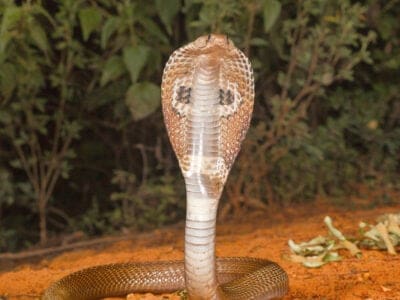
Spitting Cobra
Spitting cobras are types of cobras that can spit venom at predators and prey.

Squirrel
Small rodents found in woodlands worldwide!

Stick Insect
There are more than 3,000 different species!
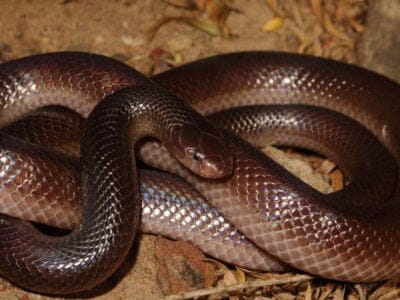
Stiletto Snake
Because of their unique venom delivery system, stiletto snakes are almost impossible to hold safely in the usual way (with fingers behind the head) without being bitten.

Stork
They can’t sing like other birds.
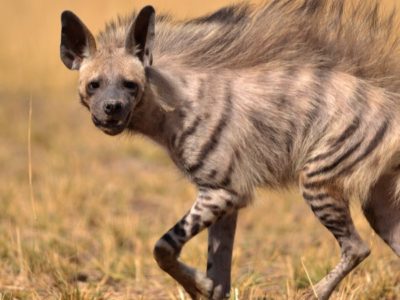
Striped Hyena
The striped hyenas usually mark their territories with the help of the scent gland secretions from their anal pouch.

Sulcata Tortoise
Some cultures in Africa believe the sulcata tortoise is an intermediary between the people and their ancestors and gods.

Swan
Populations have been affected by pollution!

Tarantula Hawk
Tarantula hawks are excellent pollinators, especially for milkweed.

Termite
Their mounds can be up to 9 meters tall!

Thrush
The American robin is called the robin because its red breast reminded European settlers of the robin back in the old country.

Tick
They inject hosts with a chemical that stops them from feeling the pain of the bite

Tiger Beetle
The adult tiger beetle is one of the fastest land insects in the world

Tortoise
Can live until they are more than 150 years old!

Tree Frog
Found in warmer jungles and forests!
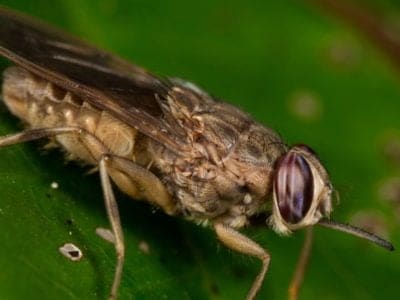
Tsetse Fly
Tsetse flies are large biting flies that live in the tropical regions of Africa.
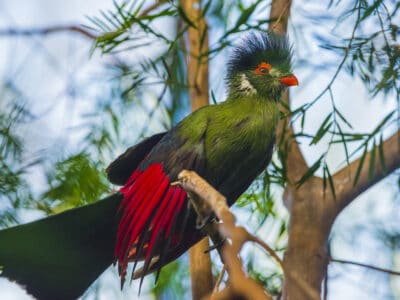
Turaco
Their name means “banana-eater,” but they rarely ever eat bananas.

Turtles
Some species of aquatic turtles can get up to 70 percent of their oxygen through their butt.
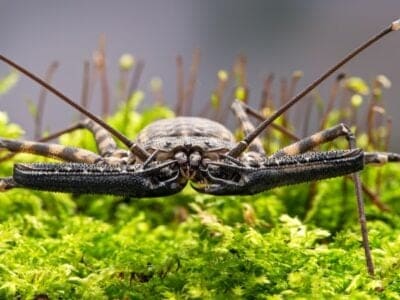
Vinegaroon
Vinegaroons can spray 19 times before the glands are depleted
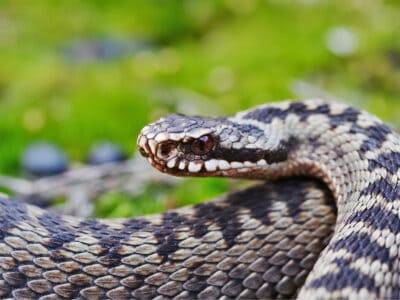
Viper
Vipers are one of the most widespread groups of snakes and inhabit most

Vulture
There are 30 different species worldwide!
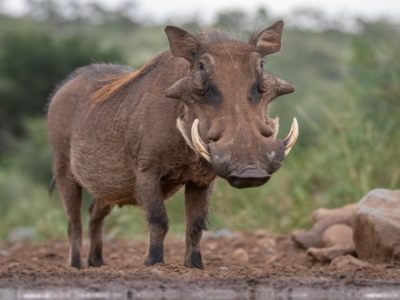
Warthog
Has two sets of tusks on it's face!

Wasp
There are around 75,000 recognised species!
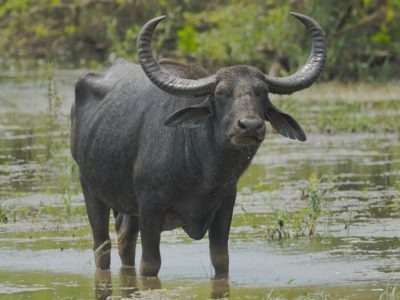
Water Buffalo
Has been domesticated for thousands of years!

White Ferret / Albino Ferrets
There are two different types of white ferrets!
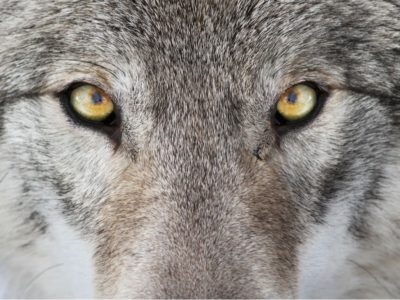
Wolf
Thought to date back more than 300,000 years!

Wolf Spider
Carnivorous arachnid that hunts its prey.

Woodlouse
This animal can roll up into a ball

Woodlouse Spider
Unlike most spiders, woodlouse spiders don’t build a web.

Woodpecker
There are 200 different species!

Worm
Doesn’t have eyes.
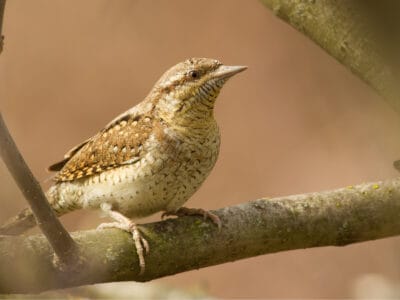
Wryneck
They feign death by making their bodies limp and closing their eyes.
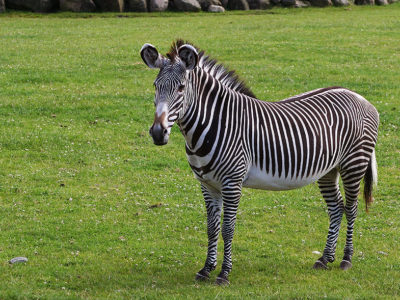
Zebra
Stripe patterns are unique to each individual!

Zebu
There are around 75 different species!
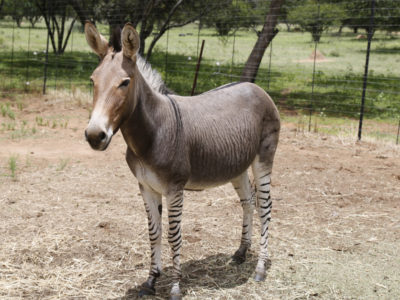
Zonkey
The offspring of Zebra and Donkey parents!
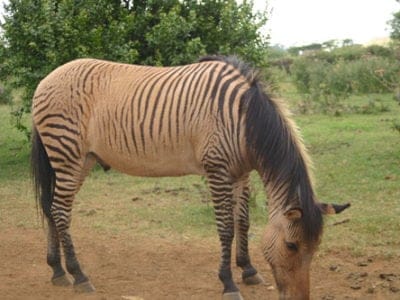
Zorse
The offspring of a Zebra and Horse parents!
Ethiopian Animals List
- Aardvark
- Aardwolf
- Abyssinian
- African Bush Elephant
- African Civet
- African Clawed Frog
- African Fish Eagle
- African Jacana
- African Wild Dog
- Agama Lizard
- American Cockroach
- Ant
- Antelope
- Armyworm
- Australopithecus
- Baboon
- Banana Spider
- Barb
- Barn Owl
- Barn Swallow
- Bat
- Bat-Eared Fox
- Bed Bugs
- Bee
- Beetle
- Beewolf wasp
- Bichir
- Bird
- Biscuit Beetle
- Black Mamba
- Black Widow Spider
- Blind Snake
- Brazilian Treehopper
- Brown-banded Cockroach
- Brown Dog Tick
- Buffalo
- Bumblebee
- Bush Baby
- Butterfly
- Caecilian
- Caracal
- Carpenter Ant
- Carpet Viper
- Cat
- Caterpillar
- Catfish
- Centipede
- Chameleon
- Cheetah
- Chicken
- Cichlid
- Cockroach
- Codling Moth
- Common Buzzard
- Common Furniture Beetle
- Common House Spider
- Cormorant
- Cow
- Crab
- Crab Spider
- Crane
- Cricket
- Crocodile
- Crocodylomorph
- Crow
- Cuckoo
- Desert Locust
- Dik-Dik
- Dinopithecus
- Dog
- Dog Tick
- Donkey
- Dormouse
- Dragonfly
- Duck
- Dung Beetle
- Earthworm
- Earwig
- Eel
- Egyptian Cobra (Egyptian Asp)
- Egyptian Goose
- Egyptian Vulture
- Eland
- Electric Catfish
- Elephant
- Elephant Shrew
- Falcon
- False Widow Spider
- Fire Ball Python
- Firefly
- Flamingo
- Flea
- Fly
- Fox
- Frog
- Fruit Bat
- Fruit Fly
- Fulvous Whistling Duck
- Gazelle
- Gecko
- Gerbil
- German Cockroach
- Giraffe
- Glass Lizard
- Glowworm
- Gnat
- Goat
- Golden Eagle
- Golden Oriole
- Gomphotherium
- Grasshopper
- Green Bee-Eater
- Griffon Vulture
- Guinea Fowl
- Gypsy Moth
- Hamster
- Hare
- Hawk Moth Caterpillar
- Hedgehog
- Heron
- Hippopotamus
- Honey Badger
- Honey Bee
- Hoopoe
- Horse
- Horsefly
- Housefly
- Human
- Huntsman Spider
- Hyena
- Ibex
- Ibis
- Insects
- Jacana
- Jackal
- Jumping Spider
- Kenyan Sand Boa
- Kingfisher
- Klipspringer
- Kori Bustard
- Kudu
- Ladybug
- Lappet-faced Vulture
- Leech
- Leopard
- Leopard Tortoise
- Lesser Jacana
- Liger
- Lion
- Lizard
- Locust
- Maggot
- Magpie
- Marabou Stork
- Mayfly
- Mealybug
- Millipede
- Mole
- Mongoose
- Mongrel
- Monitor Lizard
- Monkey
- Moorhen
- Mosquito
- Moth
- Mouse
- Mule
- Naked Mole Rat
- Nematode
- Nightingale
- Nile Crocodile
- Nile Monitor
- Nile Perch
- No See Ums
- Northern Pintail
- Olive Baboon
- Orb Weaver
- Oribi
- Ortolan Bunting
- Osprey
- Ostrich
- Otter
- Owl
- Parakeet
- Parrot
- Patas Monkey
- Peregrine Falcon
- Pheasant
- Pigeon
- Praying Mantis
- Puff Adder
- Quail
- Rabbit
- Rat
- Red-Billed Quelea Bird
- Red Spitting Cobra
- Redstart
- Rhinoceros
- River Turtle
- Robin
- Rock Hyrax
- Rock Python
- Rodents
- Rooster
- Sable Ferret
- Saturniidae Moth
- Savannah Monitor
- Scorpion
- Sea Eagle
- Seahorse
- Serval
- Sheep
- Short-Eared Owl
- Shrew
- Shrimp
- Sivatherium
- Skink Lizard
- Slug
- Smokybrown Cockroach
- Snail
- Snake
- Sparrow
- Spider Wasp
- Spitting Cobra
- Squirrel
- Stick Insect
- Stiletto Snake
- Stork
- Striped Hyena
- Sulcata Tortoise
- Swallowtail Butterfly
- Swan
- Tarantula Hawk
- Termite
- Thrush
- Tick
- Tiger Beetle
- Tortoise
- Tree Frog
- Tsetse Fly
- Turaco
- Turtles
- Vinegaroon
- Viper
- Vulture
- Warthog
- Wasp
- Water Buffalo
- White Ferret / Albino Ferrets
- Wolf
- Wolf Spider
- Woodlouse
- Woodlouse Spider
- Woodpecker
- Worm
- Wryneck
- Zebra
- Zebu
- Zonkey
- Zorse
Animals in Ethiopia FAQs (Frequently Asked Questions)
What kind of animals live in Ethiopia?
Ethiopia is home to a wide variety of wildlife, including 22,000 species of butterflies and moths, over 800 bird species, and about 320 species of mammals. This is along with the 10 animals mentioned above that can only be found in Ethiopia.
Are there lions in Ethiopia?
Yes, in fact, lions are the national animal of Ethiopia!
Are there elephants in Ethiopia?
There are elephants in Ethiopia, with a unique subspecies in Babille Elephant Sanctuary.
What animals are disappearing in Ethiopia?
The list of endangered animals in Ethiopia is a long one. It includes African Elephants, African Lions, the African Spurred Tortoise, African Wild Ass, African Wild Dog, African White-Backed Vulture, Bale Monkey, Bale Mountains Frog, Bale Shrew, and more.





